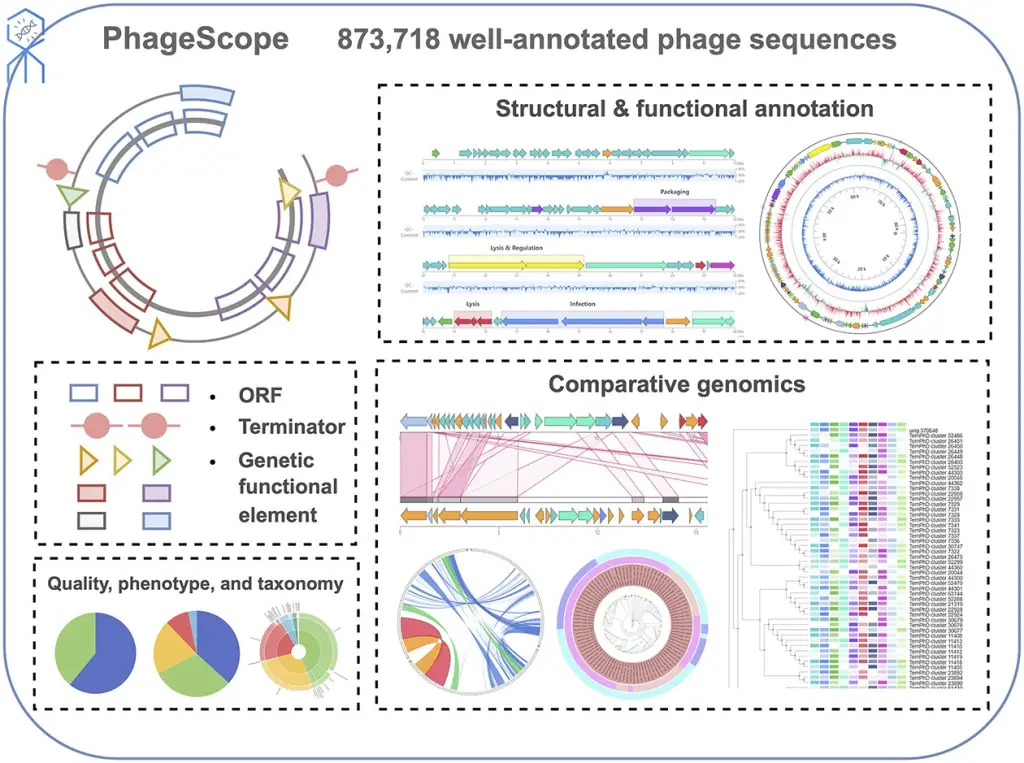
Recent advances in sequencing technologies have greatly facilitated the generation of large volumes of high-quality sequence data. However, generating accurate and complete genomes from these data can be a complex and challenging process. For phages, which can have small and highly variable genomes, genome assembly can be particularly difficult. Currently, two primary methods are used for phage genome assembly: de novo assembly and reference-based assembly. While each method has its own strengths and limitations, the choice between the two depends on several factors, including the amount and quality of sequencing data, the availability of reference genomes, and the research objectives.
De-Novo genome assembly
De novo assembly is a method of genome assembly that involves piecing together overlapping fragments of DNA without the use of a reference genome. This method can be particularly useful for assembling phage genomes because phages are known to have highly variable genomes that may not have close relatives or well-annotated reference genomes. In such cases, de novo assembly can provide a more accurate representation of the phage genome, which can be used for downstream analysis and functional characterization.
De novo assembly can be a computationally intensive process that requires a high depth of coverage and quality sequencing data. It involves several steps, including quality control, error correction, assembly graph construction, and contig scaffolding. While the process can be time-consuming, recent advancements in sequencing technologies and computational algorithms have made it more efficient and accessible for many researchers.
Despite its strengths, de novo assembly also has some limitations. One of the main challenges is the risk of generating a fragmented or incomplete genome assembly, which can impact the accuracy of downstream analysis. Additionally, the method can be more prone to errors and misassemblies, which can be difficult to detect and correct.
In general, de novo assembly represents a valuable approach for constructing phage genomes, especially in instances where a suitable reference genome is unavailable. It's important to note that in most cases, the reference phage genome is not available in the database.
Reference-based genome assembly
Reference-based assembly is a method of genome assembly that involves mapping the sequencing reads to a previously assembled genome. This method can be useful for assembling phage genomes when a high-quality reference genome is available. Reference-based assembly can be a more straightforward and efficient approach than de novo assembly, as it relies on aligning sequencing data to an existing genome, rather than piecing together fragments of DNA.
The use of a reference genome can help improve the accuracy of the genome assembly and reduce the risk of errors and misassemblies. Additionally, it can provide valuable information about the genomic features of the phage, such as gene content and synteny, which can be used for downstream analysis and functional characterization.
However, the reference-based assembly also has some limitations. One of the main challenges is the lack of suitable reference genomes for many phages, which can limit the applicability of the method. Additionally, a reference-based assembly can be less accurate for phages with highly divergent genomes or regions of low coverage.
The use of reference-based assembly can prove advantageous for constructing phage genomes, but only when an appropriate reference genome is obtainable. However, given the significant differences that exist between phage genomes, finding a compatible reference genome is an infrequent occurrence. As such, it's crucial that researchers diligently assess both the quality and completeness of the reference genome, as well as the appropriateness of the sequencing data, before beginning a reference-based assembly endeavor.
Optimal Approach for Assembling Phage Genomes
Assembling genomes for organisms such as bacteria and fungi can be effectively accomplished through a reference-based assembly approach. This is due in large part to the availability of numerous well-annotated reference genomes for bacteria that are publicly accessible. However, when it comes to phage genomes, highly variable sequences and a lack of close relatives or well-annotated reference genomes can make reference-based assembly challenging. As a result, de novo assembly is generally considered to be the preferred method for assembling phage genomes. Several software tools, including SPAdes and Shovill, are available for this purpose.
Based on my personal experience, Shovill has proven to be a consistently reliable and efficient software tool for the de novo assembly of phage genomes. I have utilized this powerful tool via a terminal interface with great success. Shovill, which is an Illumina-optimized wrapper for SPAdes with subsampling procedures, is particularly notable for its exceptional capacity to process large amounts of Illumina sequencing data when compared to other genome assembly tools.
It's important to keep in mind that various open-source and commercial genome assembly tools are available, each with their own distinct advantages and limitations. You may want to visit a "tools page" that I will continue updating with links to excellent tools for use in phage research. If you have any questions, feel free to leave a comment or send an email to me at [email protected].




